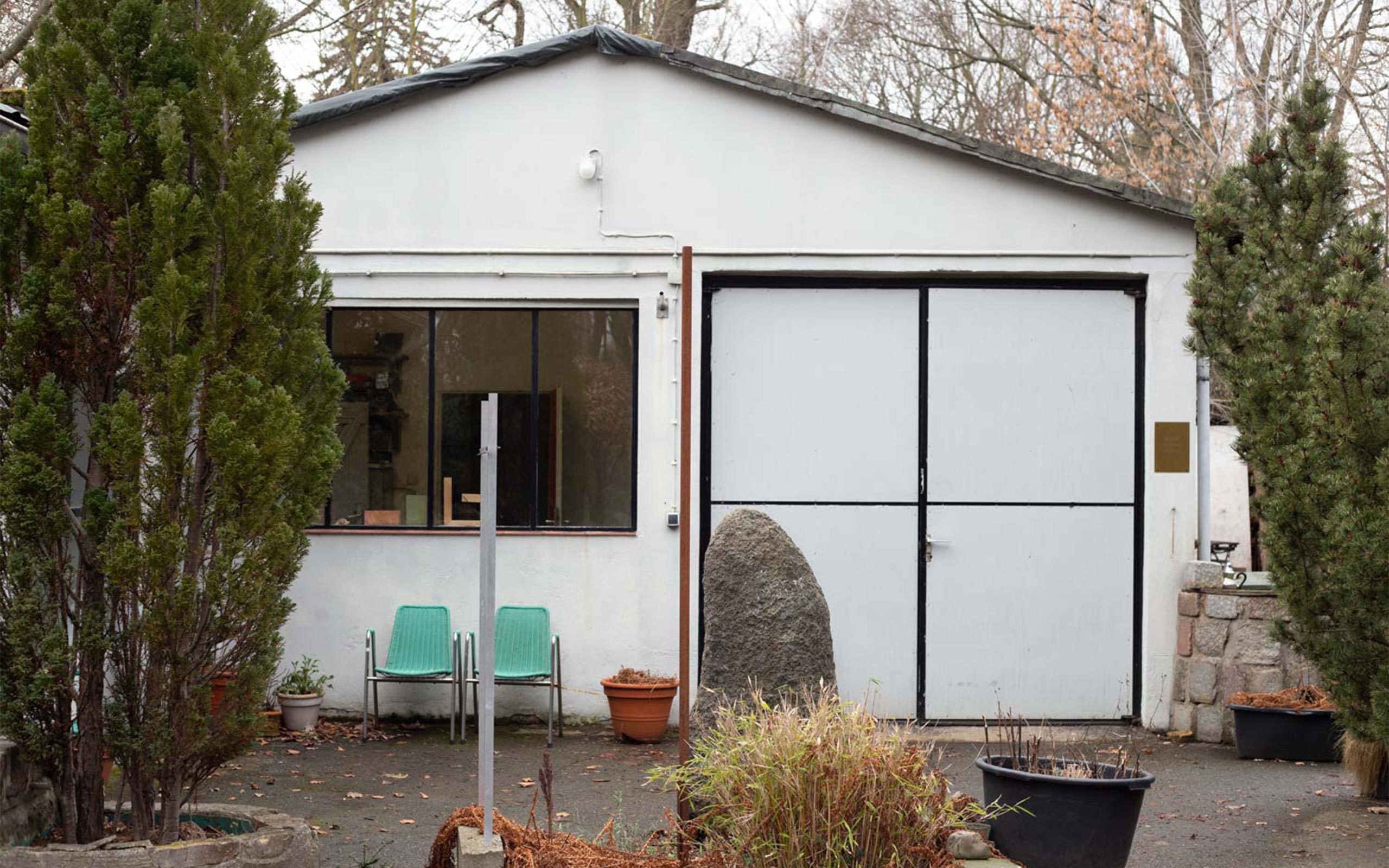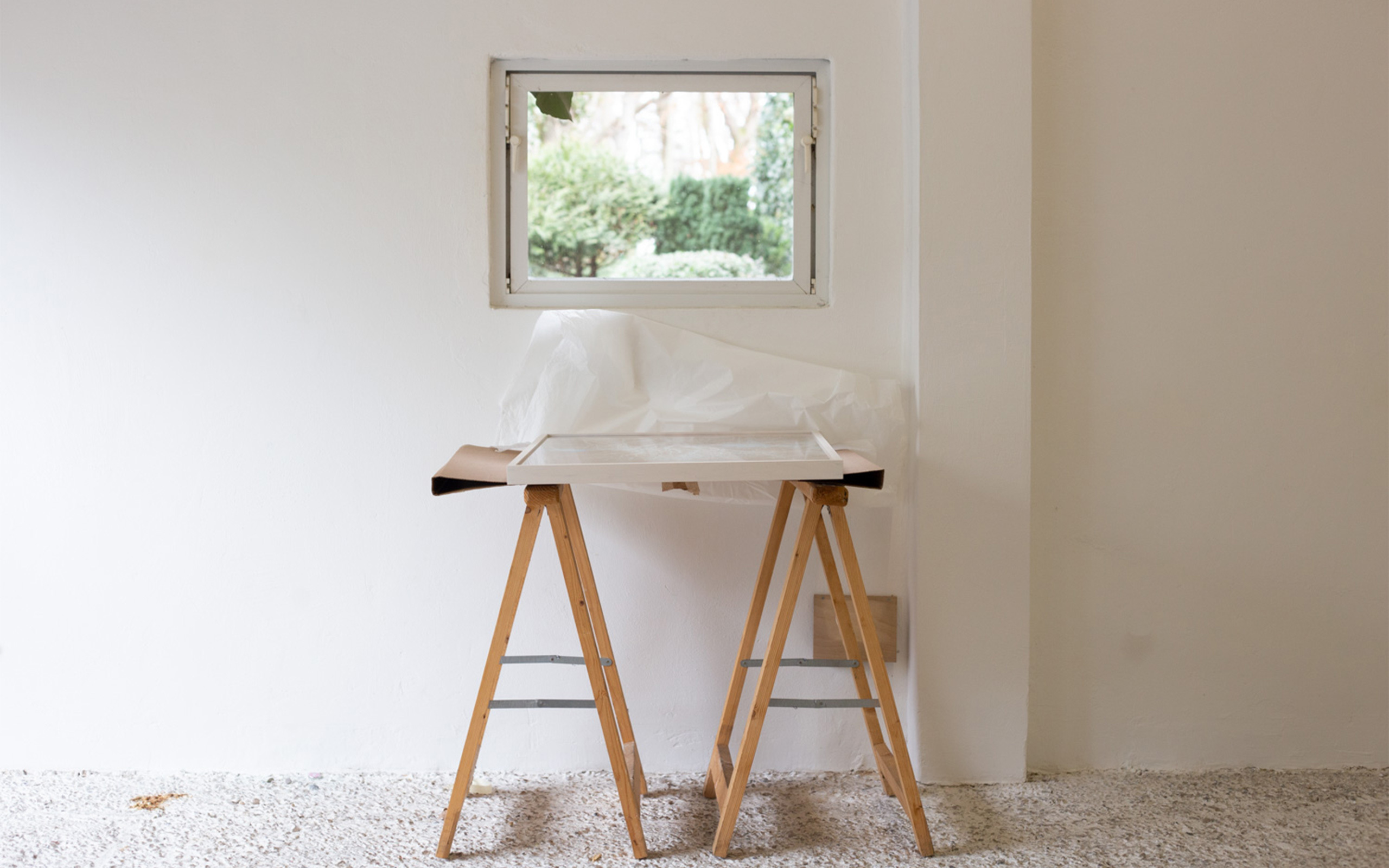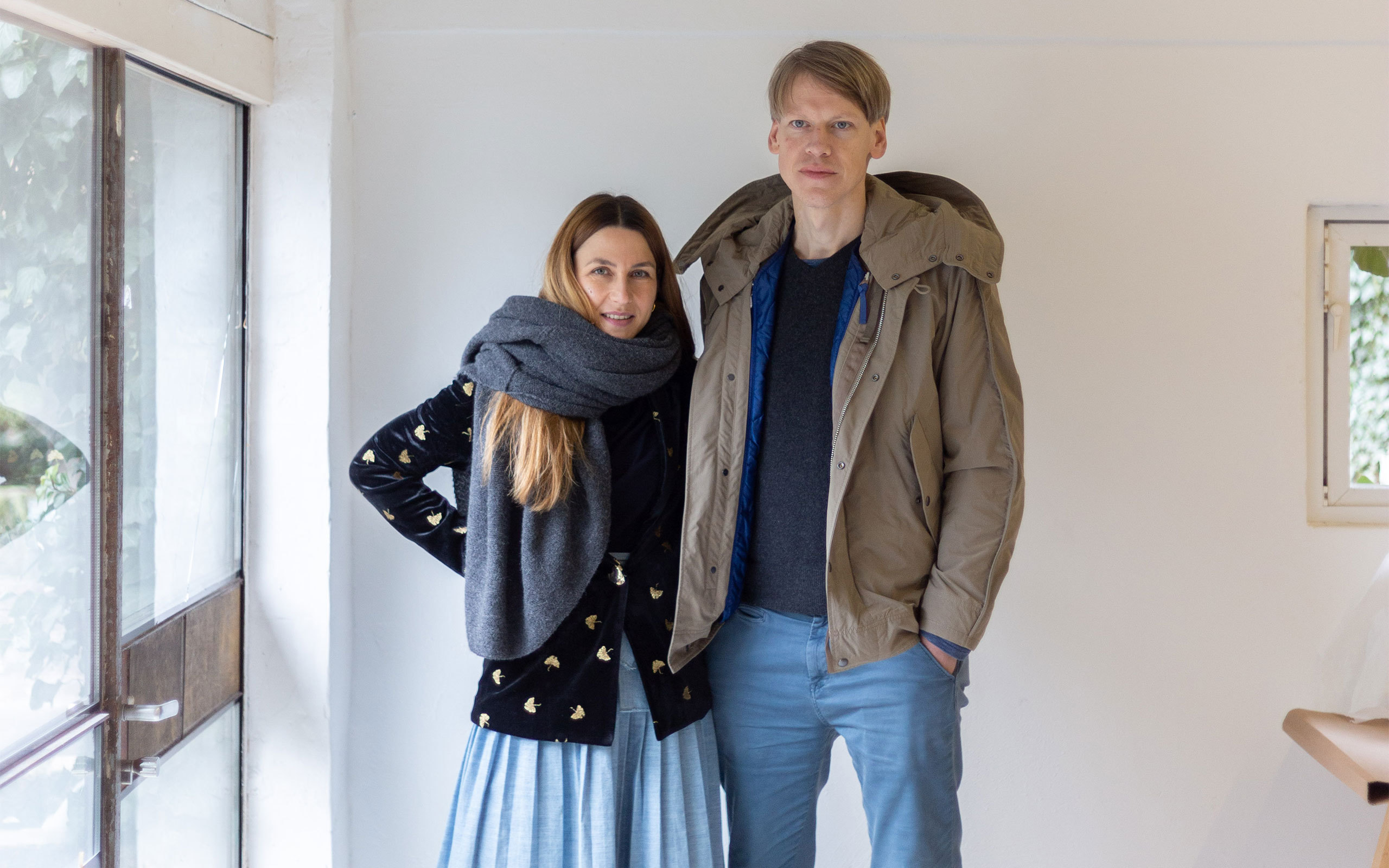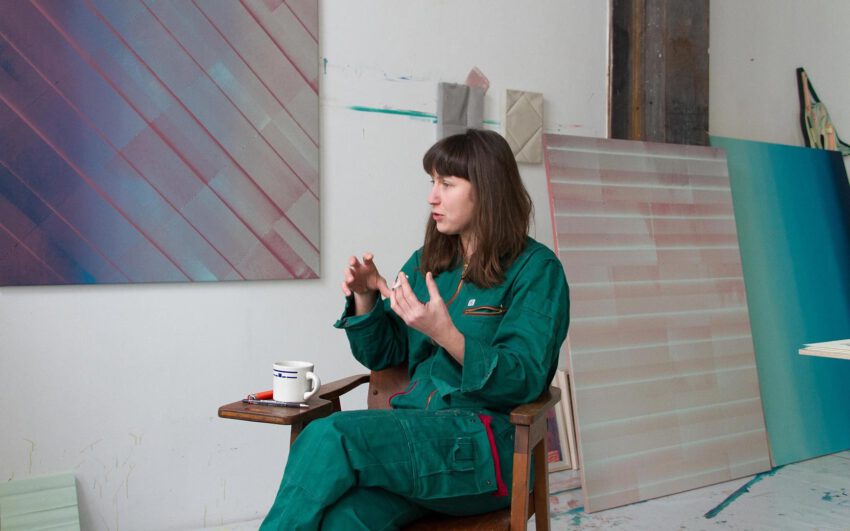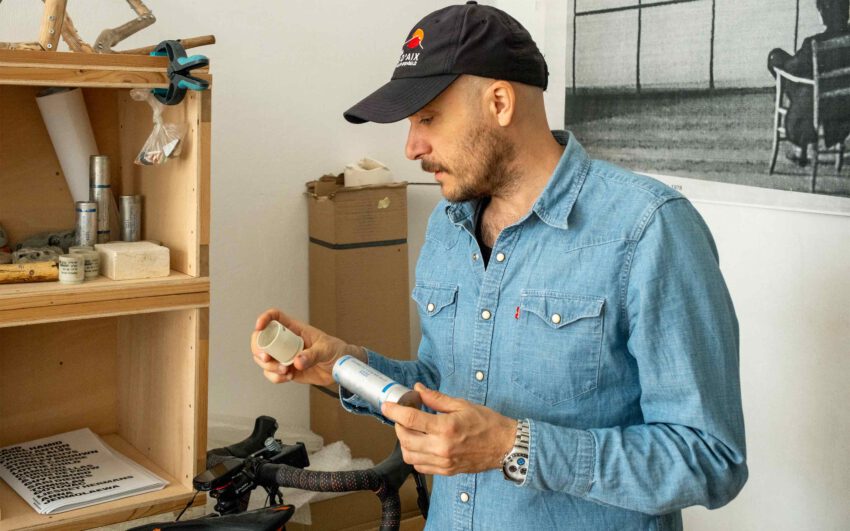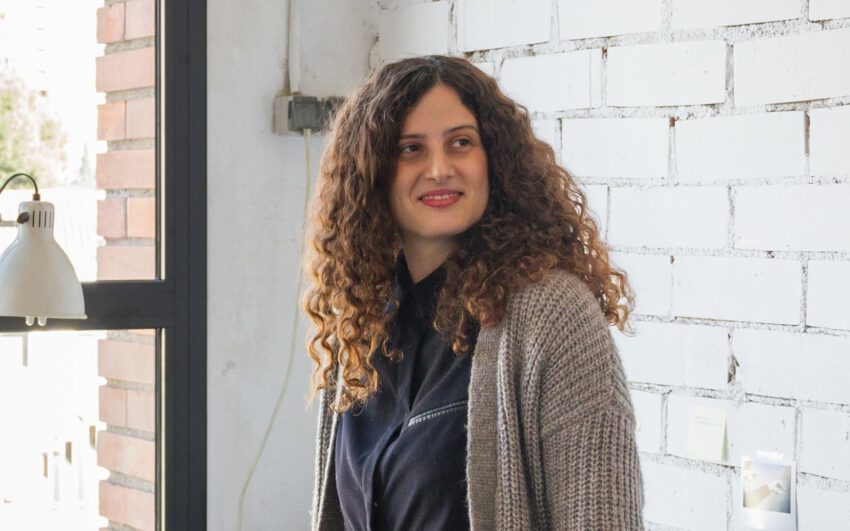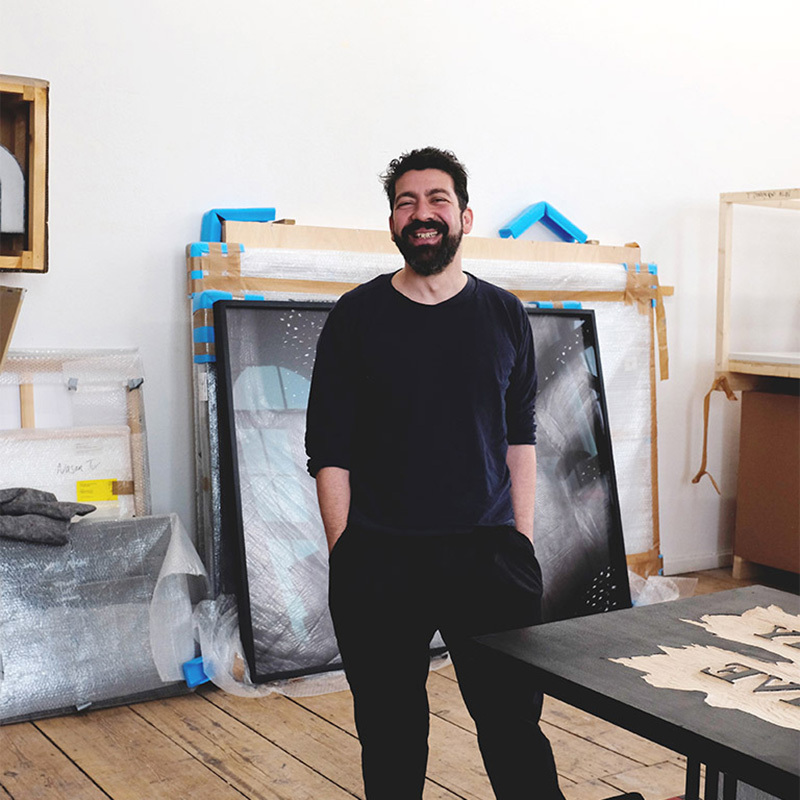The conceptual works of Fiete Stolte, a student of Karin Sander, are mainly about questioning and thinking differently about reality. For example, Stolte developed his own time calculation during his studies, according to which he has lived and worked for a longer period of time since his graduation year in 2007. According to his new time calculation, the week counted eight days and a day 21 instead of 24 hours. At the Venice Biennale in 2017, he had his own footprints cast in copper and placed on the floor. He himself described this idiosyncratic view of the soles of the artist's feet as an elaborate "iconic intervention". We talk with him and his partner Julia about the conceptual approach of their work, about letting go, and their special form of collaboration.
With the conceptual work Measure 8 Days a Week, which stems from your student days, you, Fiete, became famous. One day didn't have 24, but 21 hours and one week became not seven, but eight days. You even designed your own clock to make this alternative calculation of time real. What was the starting point of the work?
FS: The work Measure 8 Days a Week is only one neon script from a series of neons and has been part of my 8-day week. It is an attempt to shift existing parameters without material means, i.e., actually with nothing, a means to create something new. Specifically, I divided the week into shorter days with 21 hours. This is both a sculptural and performative approach. I divided the day, rearranged and then lived within it. This resulted in new works in which I have transferred the latently existing otherness. This year, for the first time in many years, we are borrowing the 8 Days Week Clock for an exhibition.
Had you previously felt the need to go against conventional social rules and our conventional division of time?
FS: My need first arose from dealing with time. I didn't consciously seek to question such things. As an artist, one exists always a bit outside of conventional rules. Early in my studies the studio became a place of participation, of being in nature and also of being apart and outside of everything. Important factors to me were temporal parameters, some of which can be comprehended astronomically like a day or a year. A week however, has been determined arbitrarily, this was different in the past and may be different in the future. Such determinations are children of their time. Since the contrivance of artificial light, we are no longer restricted to working during the day and sleeping at night. Many conventional norms and classifications are arbitrary constructs.
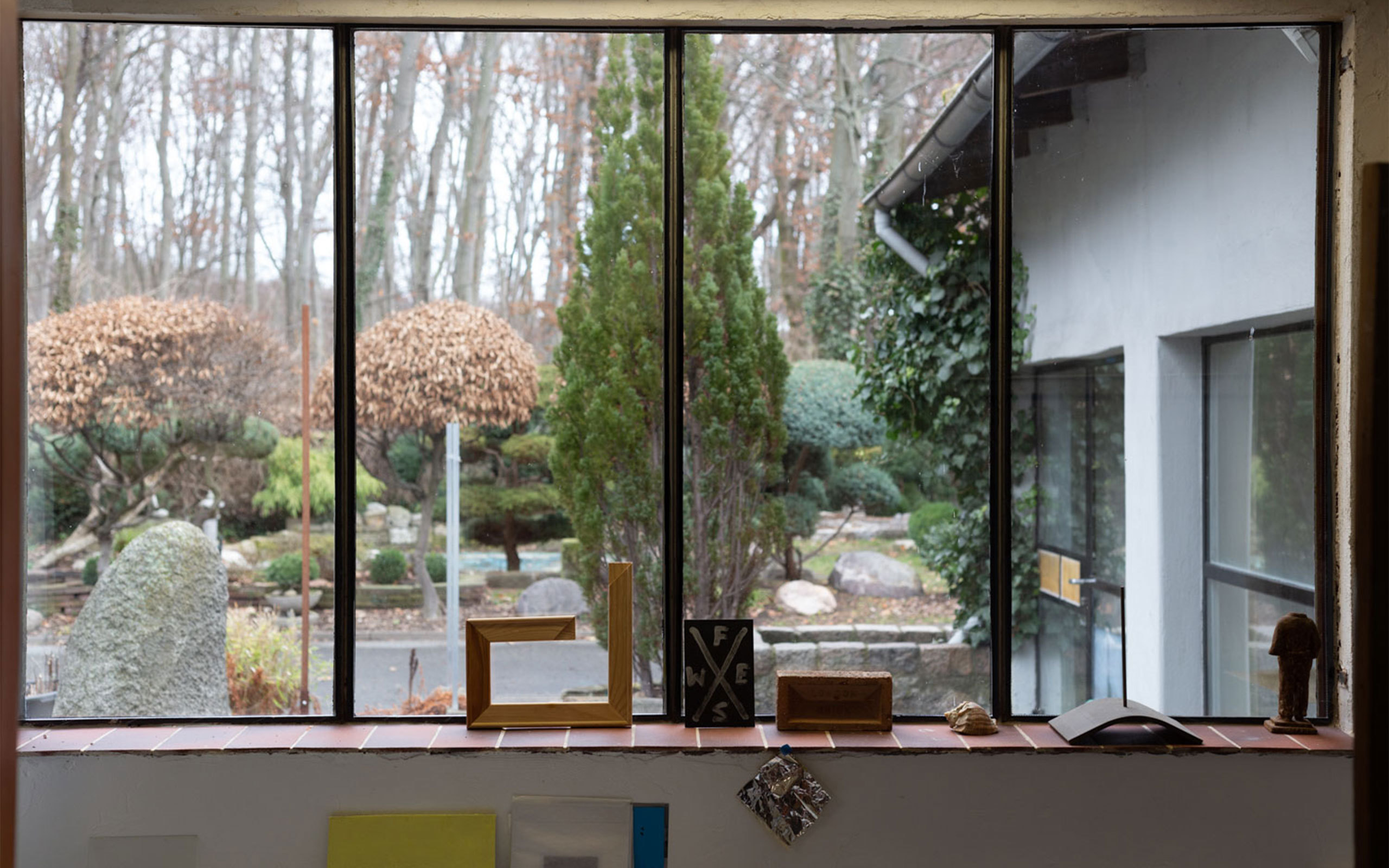
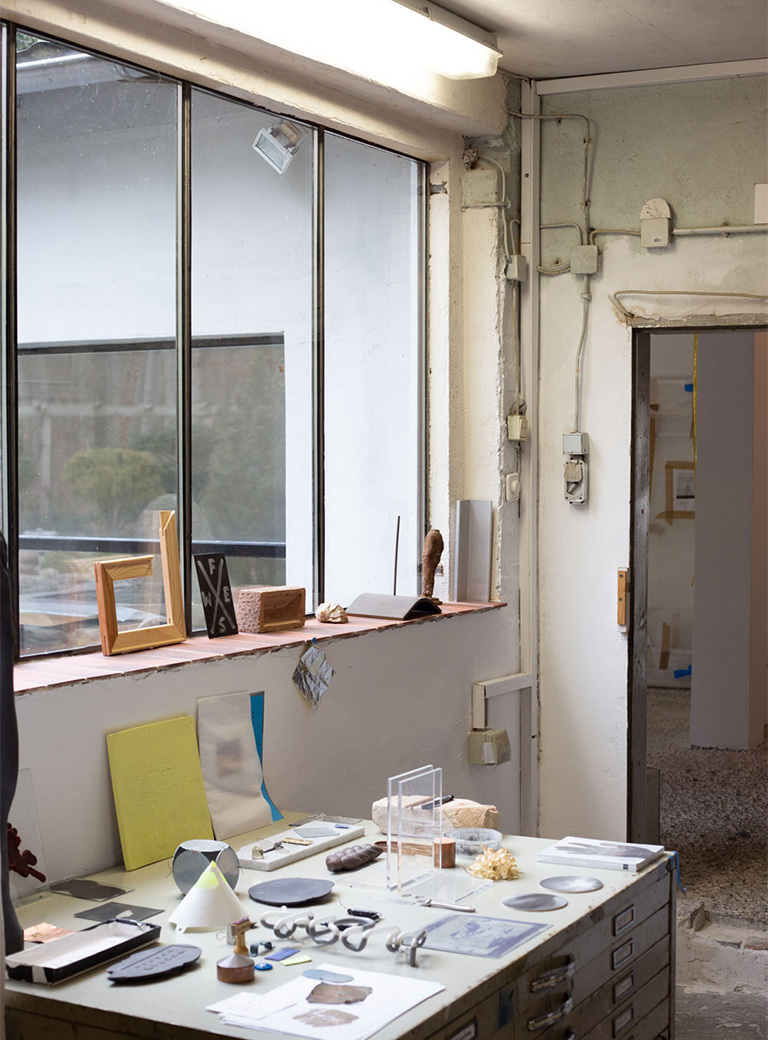
That’s true. We are currently considering abolishing daylight saving time which is an example of an arbitrary classification. What was it really like to live the eight-day week? Has your life changed as a result? What has been different compared to the seven-day week?
FS: The observation of two separate time systems, whose co-existence was not generally discernible was exciting. Only through communication with other people does their mutual existence become apparent, for example, when one wishes to make an appointment. Typically, the acknowledgment of two different time systems would automatically imply that those in communication are in different time zones. If I am on the phone with someone who is in a different time zone, it is completely normal to accept that our respective local times are not the same. But in the same place it is not normal at all and can even cause conflict. This is where my work begins, for example the Polaroid series. The works transform these topics visually, at the same time revealing the zones of “being-in-between”. They demonstrate how the night and the external darkness relate to the respective time divisions and, for example, permeate the works as structures. Neon scripts work in this context like headlines and can be thought-provoking for the imagination, e.g. what it means to think outside a given classification. In any case it is different for everyone and everyone can immerse themselves in it. For me these were also physical experiences, but above all, exciting encounters and opportunities to engage in dialog.
JS: For me these are interfaces. I haven’t shared this alternative time system with Fiete firsthand, however, from the distancing that I understood to have resulted as well as through my intensive involvement with the works, the connecting elements became particularly revealing to me. There is a great strength in these works in the overcoming of existing boundaries and the breaking with norms. Provocation occurs at such interfaces. You are in your time, I am in mine, which is of more importance? In the best-case scenario, curiosity is triggered in the other person. It is exciting to experience the reaction of others.
FS: It is also about presence and absence. You can be present or absent at the same time. This is put into focus as polarity, in which form it also reappears in other works.
Presence and absence are a big topic in your work. At the 57th Venice Biennale The curator Christine Macel invited you, Fiete, to show a work. At the Arsenale you showed the work Printing my Steps, which you had already developed in Berlin. It is a footprint. What's it all about?
FS: It is a footprint, chased and chiseled in copper worked into the sheet of metal. The work plays strongly with absence and with negative forms, very simple. There are two imprints in the ground as if someone had walked in the sand. It looks very ephemeral and, at the same time it is of high quality and possessing durability, a quality owed to the material. For me, copper stands for touch and has great conductivity. In addition, copper is also used in etching. The work is therefore comparable to a three-dimensional printing plate and as with such plates the footprints are intended for the purpose of duplication. They represent walking, one placed in front/ahead of the other, thereby symbolizing progress – in both temporal directions, forward and backwards.
JS: In a video by Bas Jan Ader, there is a moment where he jumps feet first into the water. Bas Jan Ader disappeared in mysterious circumstances which suggest a theme of presence and absence and an additional, temporal dimension. Christine Macel recognized these narrative moments and combined them beautifully in the space at the Arsenale.
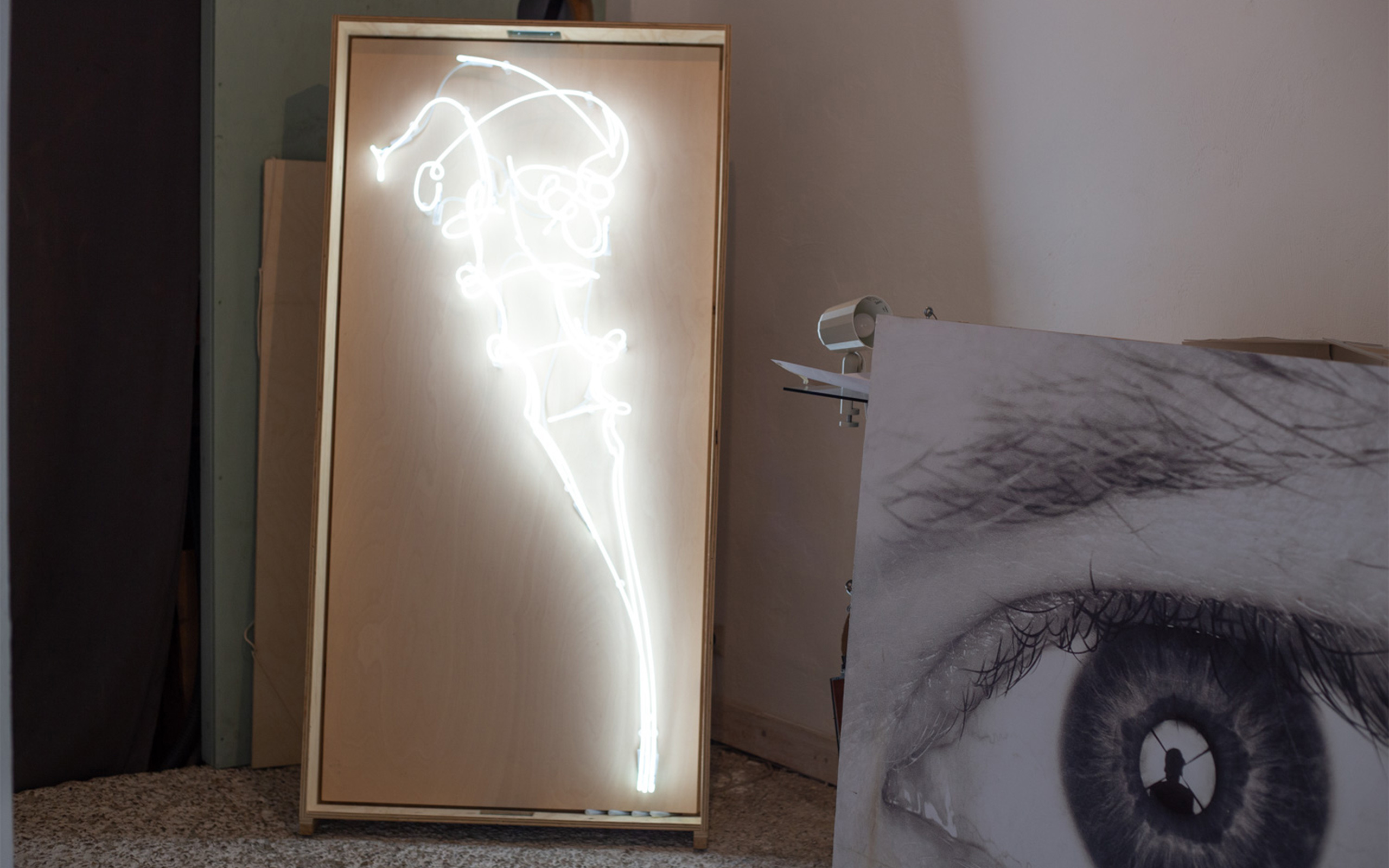
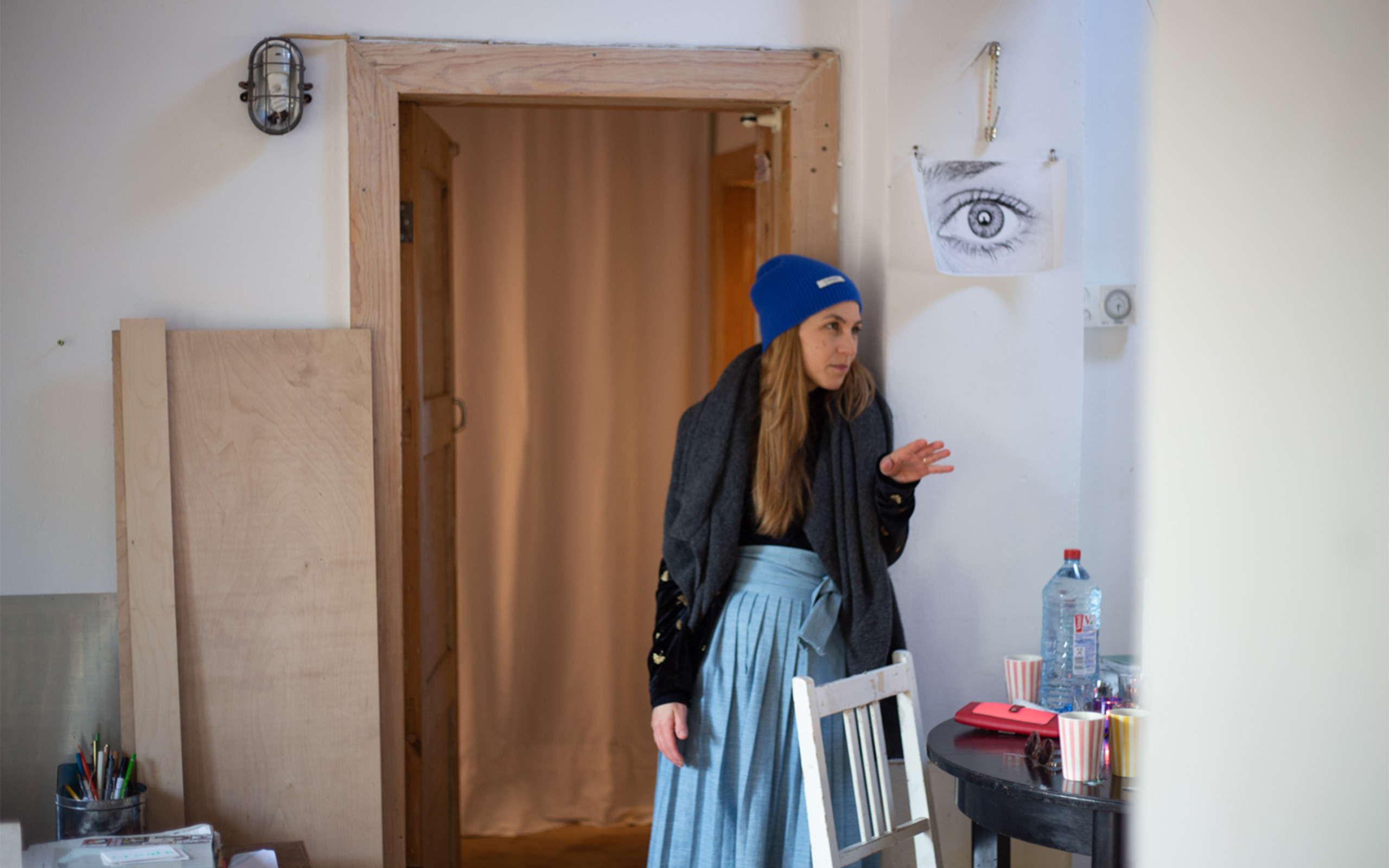
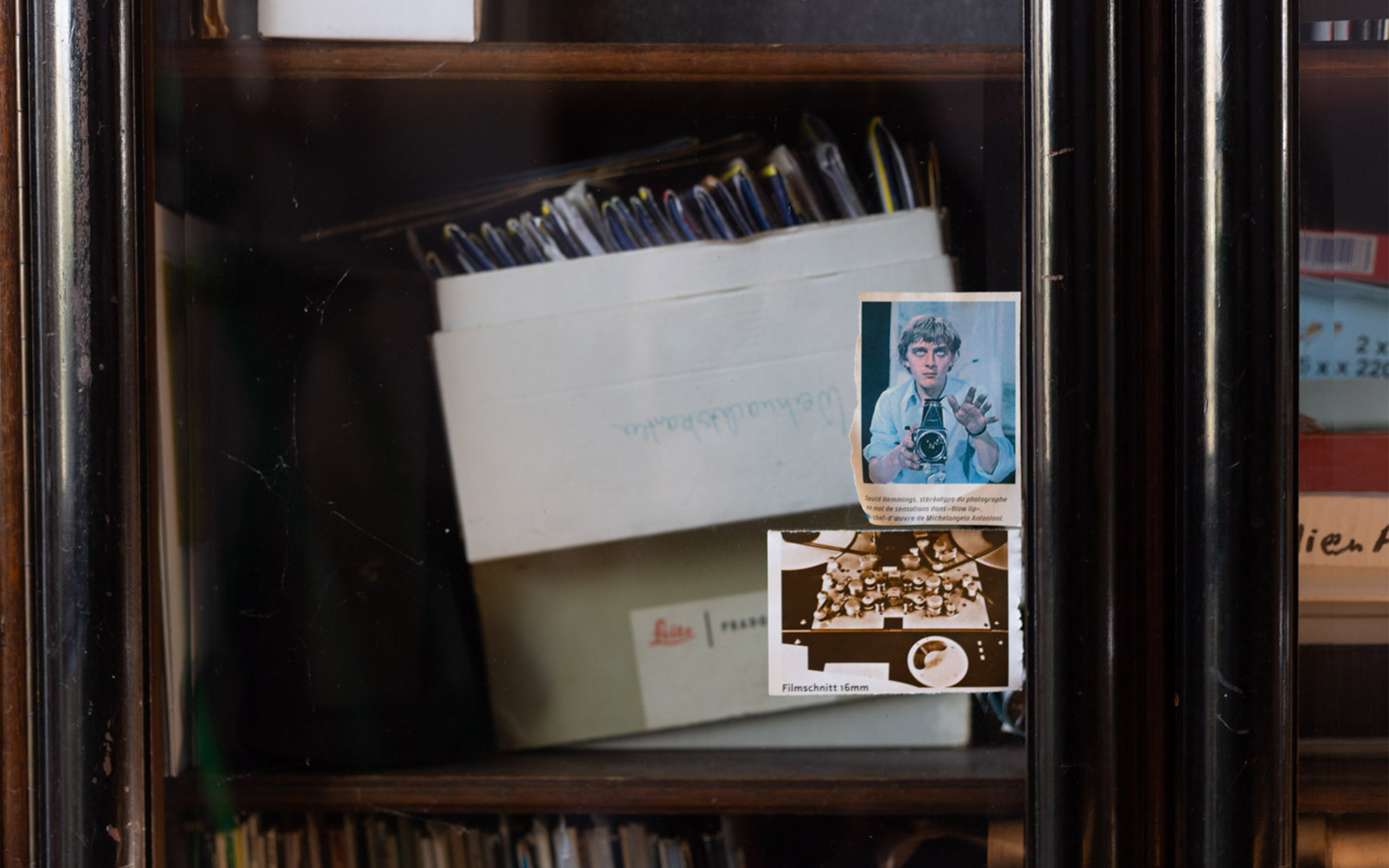
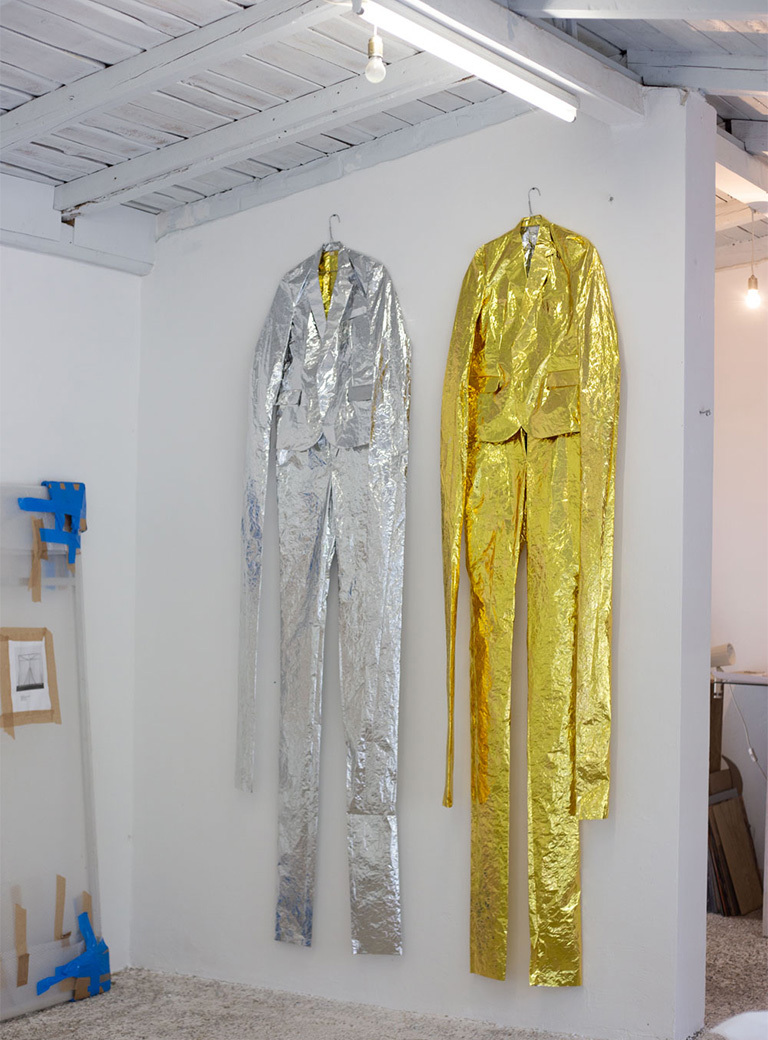
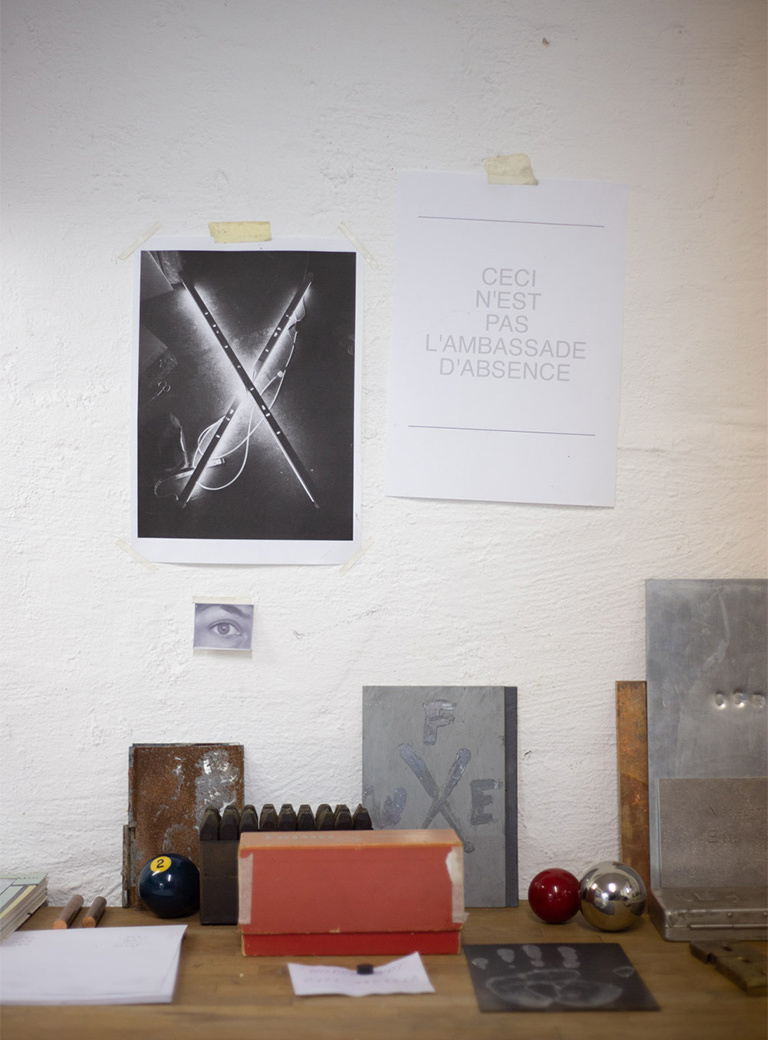
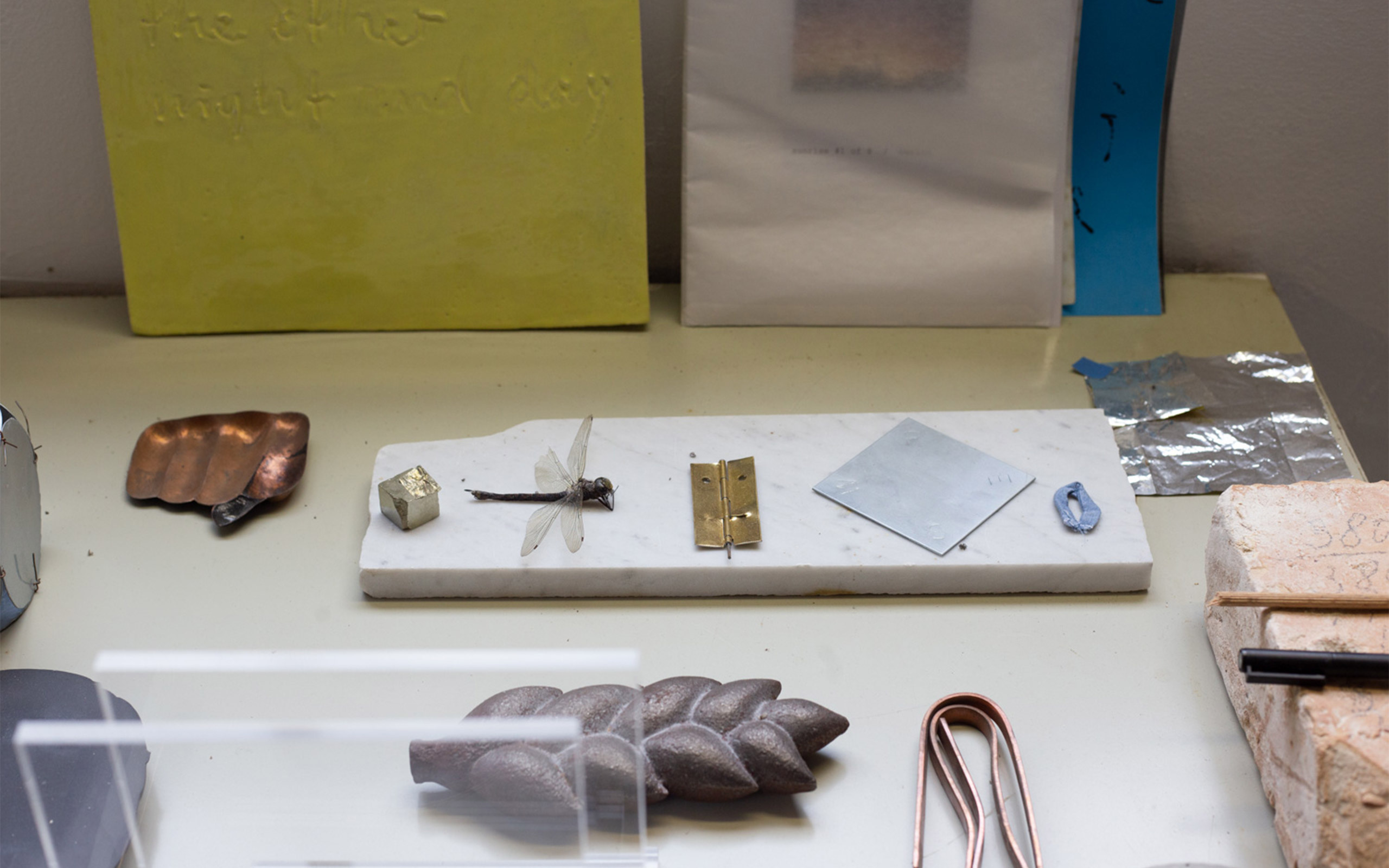
The space at the Biennale had a very special magic. How important is it to you that this poetry of the moment – the silence, the presence and the absence – is revealed through the space that surrounds your artworks?
FS: Sometimes you have to work hard to make sure that this comes together and that the place provides this poetry and supports the desired atmosphere.
JS: In the best case, it is there right from the start, like at the Biennale, but often you have to work very hard to create it. The artist always depends to a certain extent on the curator, who decides which place is allotted to you; we were very fortunate at the Venice Biennale. But there have also been situations in which we first had to rebuild the site architecturally to make it work. The surrounding space plays a very important role in creating the effect.
Currently the exhibition Painting the Night is being presented at the Centre Pompidou in Metz, where your work Smoke can also be seen. This work too has been remarkably well placed and presented in a curatorial narrative. To what extent are you together with the curator, able to determine the place in which the work is to be exhibited?
FS: It's always different. In one of the future exhibitions, a work that has existed for ten years is to be lent directly from a collection for the exhibition. One has no influence at all on how and in what context the work will be shown. Of course, it is different in a solo exhibition, where one can shape the process together with the curator right from the start.
JS: If one can accompany a project from the beginning, it is of course much more fun. But even that, which is characterized by a certain degree of passivity, can be exciting. Through the selection and placement of the works by others, new and interesting points of view can emerge. This in turn can have a positive effect on one’s own artistic process, because otherwise one might also be a little caught up in one’s own staging. New perspectives emerge, that's exciting.
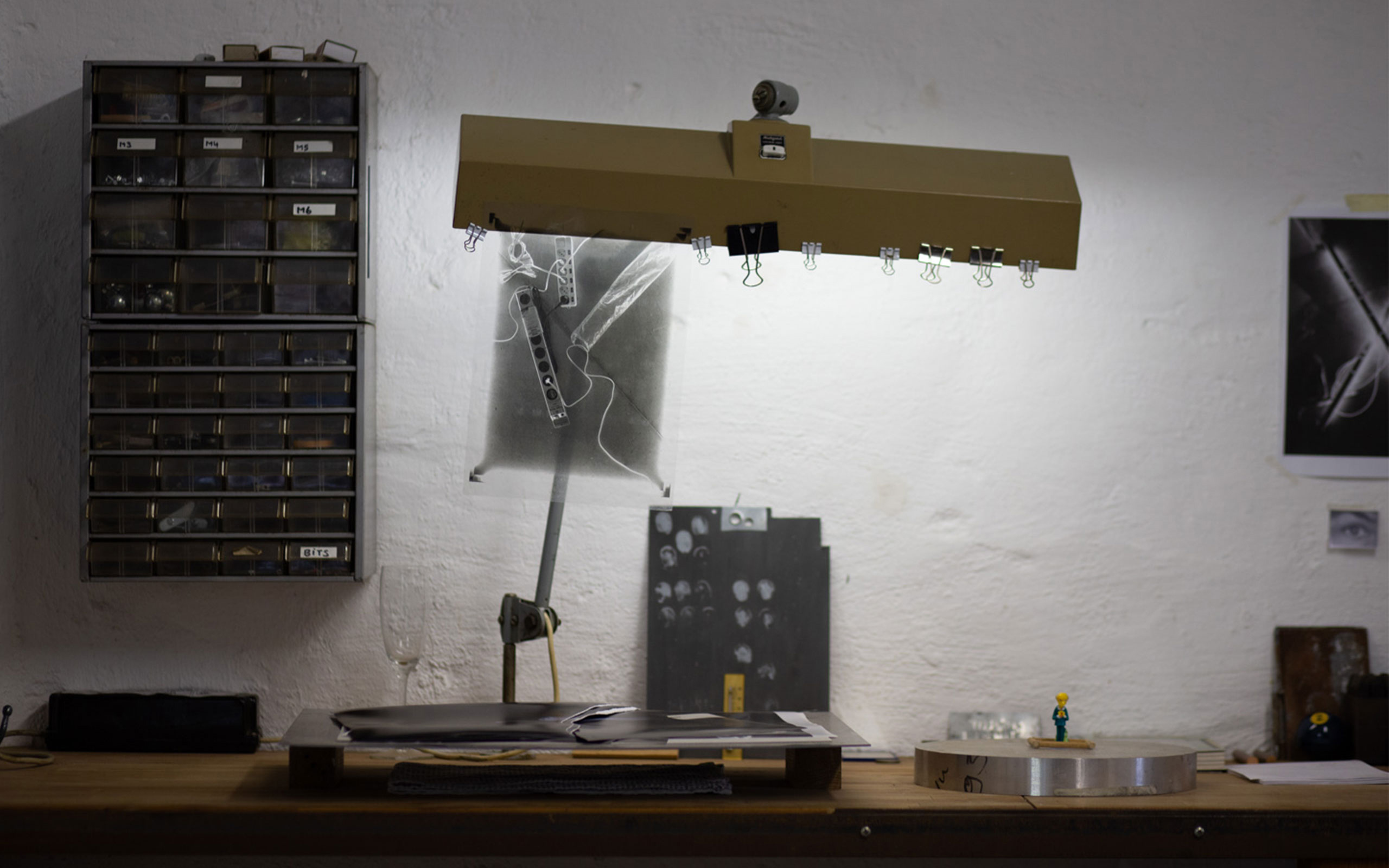
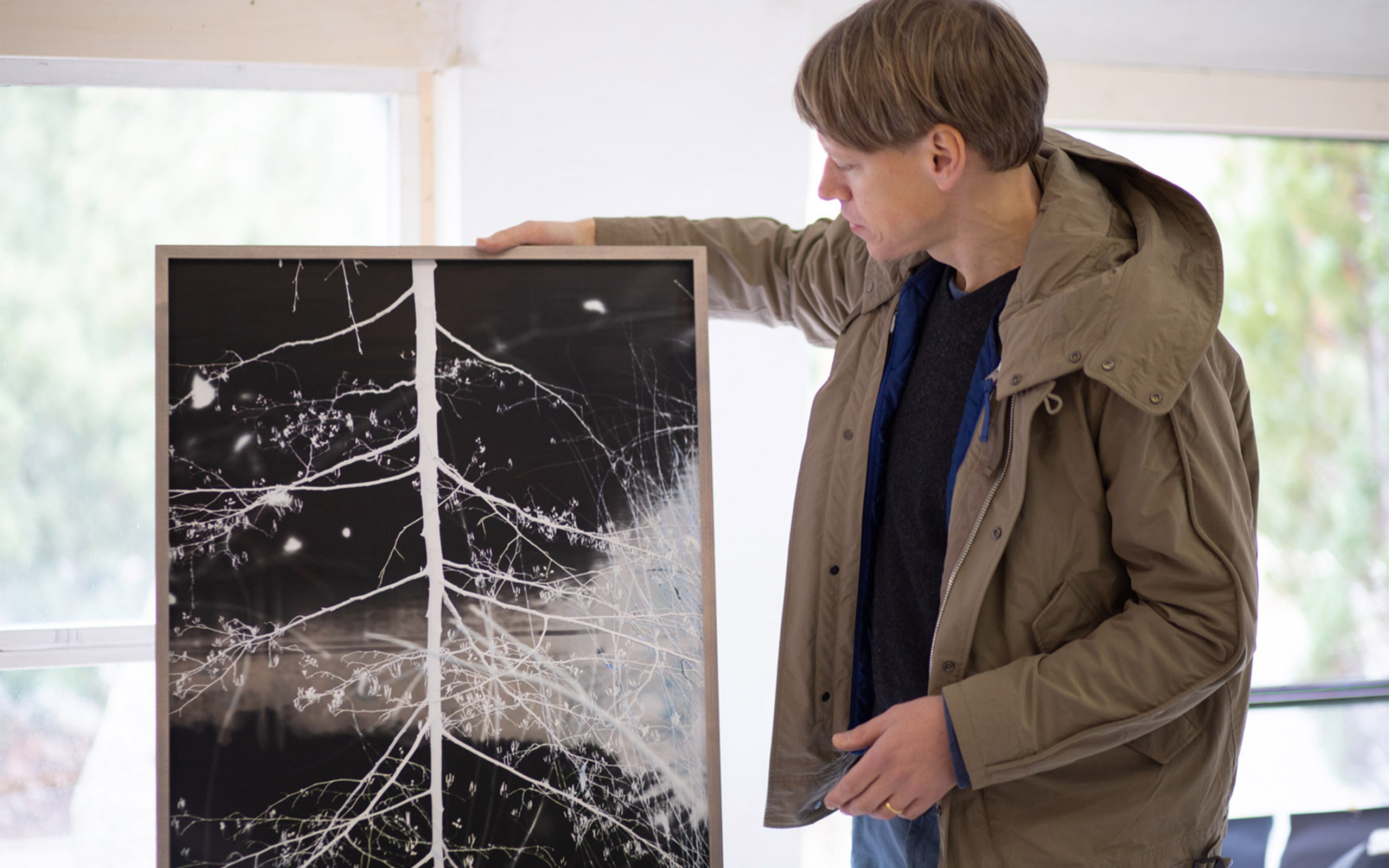
Is there a current example of this?
FS: Yes, there is a current work, Roots, of which two photographs will soon be shown in an exhibition that will be organized by several collectors. Roots are inverted leafless trees that look like roots. The motifs in the photographs also appear as negatives, i.e., they are inverted. In conversation with the collector, we developed the idea of building a bridge for the visitors by making the double inversion comprehensible so that the works can be better understood. When showing these works, we even inverted the camera image with an app on our mobile phones, like a negative that is reversed into a positive for the print. We present this double reversal as a closed-circle-installation. Therefore, the viewer is able to comprehend the reversal, which is justified in terms of its content. As in Manzoni’s Socle du Monde (Base of the World), gravity is not negated, but turned around. This is a simple idea, but at the same time it includes the physical and photographic inversion. The photo-historical fact, the translation and abstraction, i.e., translating an image into a negative and then translating it back again, is actually made redundant by digital photography. Also reversed is the meaning of the motifs, the trees become roots, immediately nourishing that which is not even visible. New mental and temporal connections to the sky, the earth, and whatever else we regard as our own environment emerge.
JS: Artists are often accused of possessing a certain fundamental arrogance, expressed in an unwillingness to explain their work to the viewer. In the case of Roots, however, it is quite an exciting process to build a bridge between the two, I gratefully accept the role of mediator, and this does not in any way detract from the work. Naturally, we always check on how this ultimately impacts on the work. In the case of this work, the moment and the performative play important roles. This results in very different images depending on the light conditions when Fiete is shooting the photographs. In other words, a certain intuition is afforded to the conceptual work; it’s also apparent in other works, though not as prevalent as in this work. Depending on the light conditions, very different images emerge. The final result can only be seen at the moment of inversion. The work is almost painterly, impressionistic, which is quite atypical for conceptual art.
FS: The colors emerge in very nuanced hues in which day and night merge. Seen in isolation, this is completely crazy. Through the distribution of the clouds and other climatic phenomena, every morning new and unique color gradations emerge in constantly new constellations, never repeating and not repeatable. This is both trivial and incredibly fascinating.
What about the themes of calculability and chance in your works? When is what activated?
JS: We experiment with materials and collect the results in sketchbooks. But only when these material experiments meet a idea, do they make sense and something new emerges. We introduce each other to ideas and then something comes together when the material, concept, the occasion is right. The process is not purely rational; you simply feel it.
FS: The ideas from the sketchbooks come up again and again, and are washed into our consciousness. In the sense of the original idea of concept art, the works are already there once they have been conceived. The sketches are checked and when the idea has matured and the time is right, they are physically realized. Some time ago, Julia said, "Hey, these are great stones! We could do something with this material, it's a wonderful stone!" Then I took out my sketchbook and showed her an idea, for which you need exactly such stones. In the spring, we'll work on it together. At the present it’s merely about the external form.
JS: It is also about the question: how do we deal with the limited number of stones? Can we create a series or even a work consisting of several parts? Can there be an edition of one single work? But one should not subject art to such considerations, which after all also determine the market, in advance. This has to be clarified during the artistic process. For the art market editions have become very important.
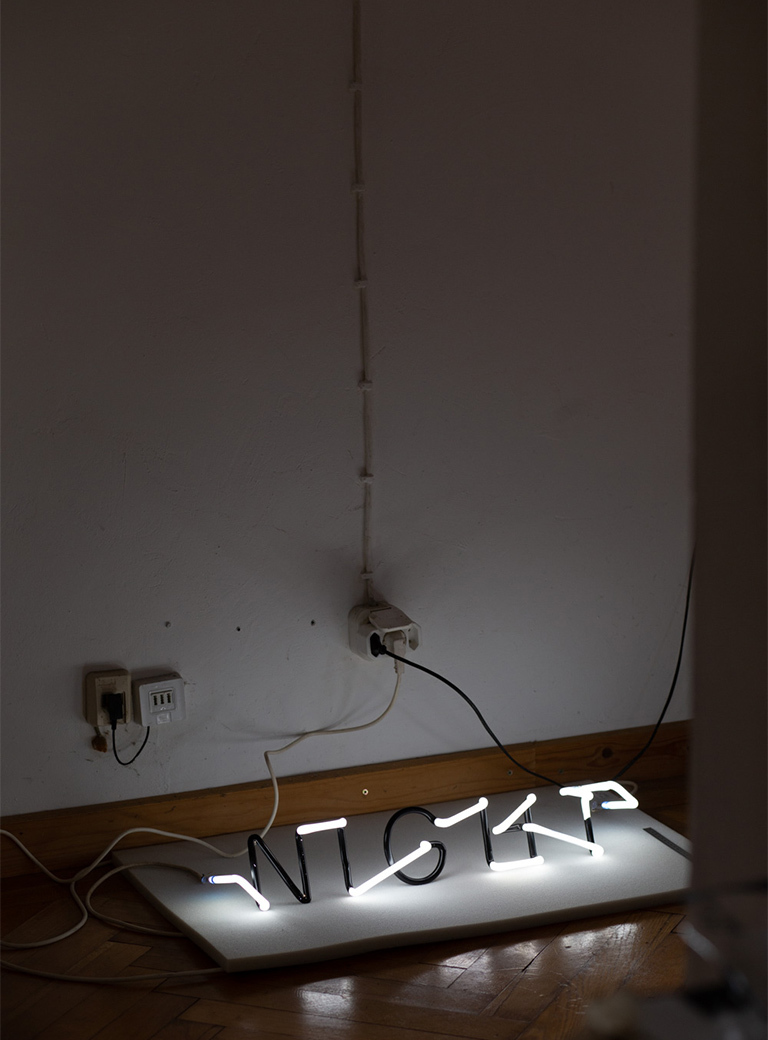
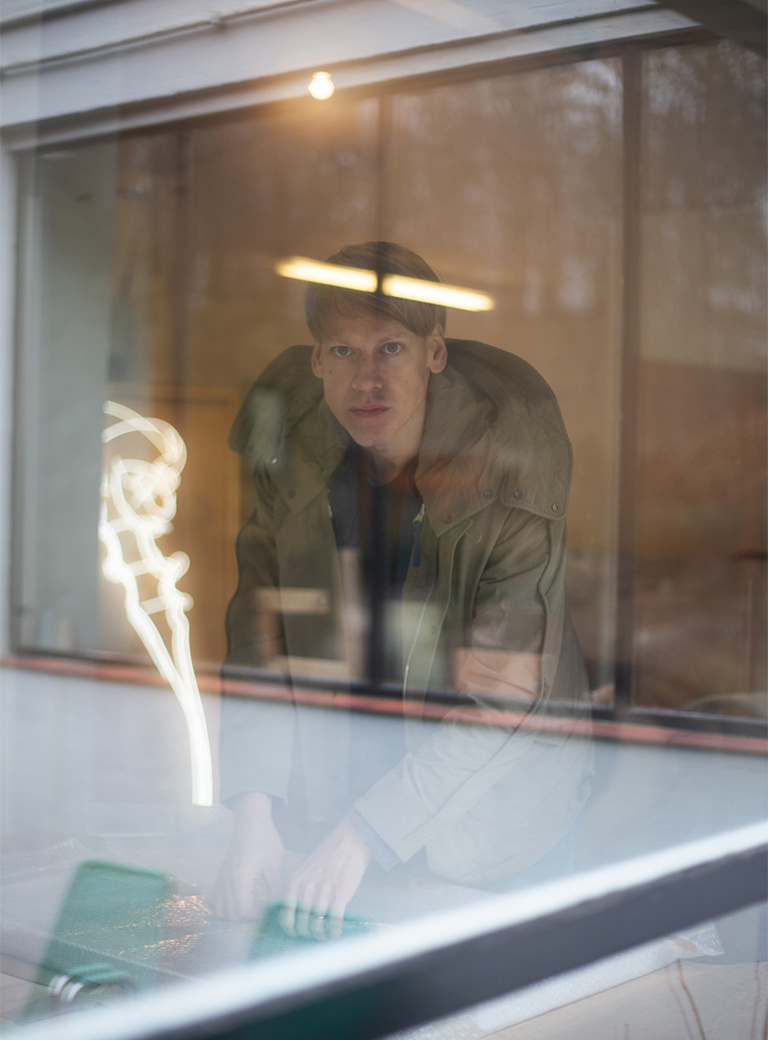
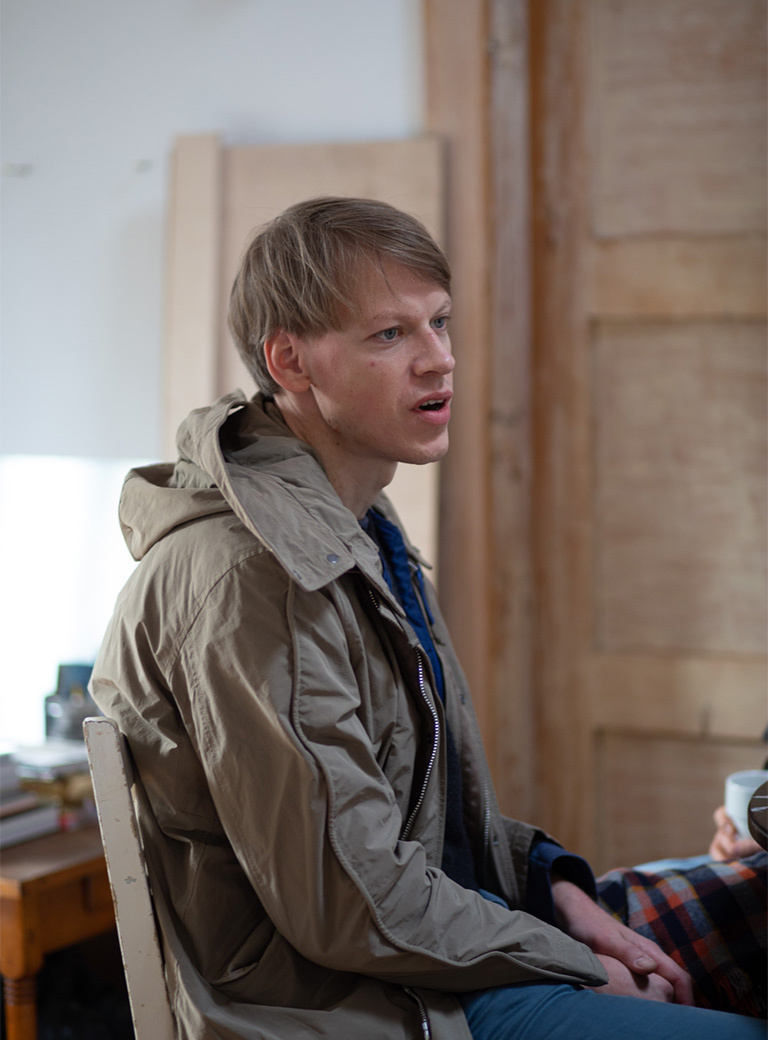
And for you? Editions are increasingly taking up space in your work and have become more and more important for you. Can one put it that way? How high is the value of an edition in your work – compared to an original work?
FS: Regarding limited editions, I like the idea that not only the wealthy person can own one unique work of art but that several people are also able to enjoy the work. Editions also have an aura. We work together with Klosterfelde Edition, who completely understand this concept.
JS: Today many works of art are referred to as editions, are very expensive, and have little in common with the idea of democratization. For many collectors it has become important to simply own one work by an artist, almost like a Louis Vuitton handbag, where the main thing is to own a piece. As an artist or studio, one has little desire to participate in this. An edition must make sense, suggest duplication in terms of content and technology.
FS: There's something in between. If one makes three exemplars of a sculpture, one does not speak of an edition. That's been the practice since casting techniques were invented. Some bronze casters say that a work is unique up to seven exemplars; others say something else. These are purely arbitrary specifications. We often create small editions, for example three copies. This benefits us as well as the owner, giving the work a different visibility in the world.
JS: For us it is always important to own an artist's proof. Sometimes works simply disappear into collections and never reappear. So, it is important to have your own archive, particularly for the future.
Can you let go when a work is sold and goes into a particular collection? Do you feel that your work is always properly understood?
JS: No, not always.
FS: The owner of a work may display it in a strange way. Fortunately, most works are located in a good place where they are greatly appreciated. It is not so important that the works are always understood correctly. There is not one correct interpretation. I like when a work is read and understood differently.
JS: This is very specific, the form is given, but viewers can see and understand something different than you originally intended. In general, you need a bit of humor when selling a work. That's okay, too. It's difficult when someone has no connection at all and only buys the work in order to make money in the secondary market at some point. Of course, that's also legitimate, but it's difficult for us if these aspects or the color of the wall determine the purchase. We attach great importance to the fact that the galleries take this into account when selling. Fortunately, Albertz Benda and Lisa Kandlhofer are just as considerate as Klosterfelde and we always know where our works are going. Ideally, we also get to know the collectors before the purchase, thus creating a connection. Of course, this is only possible because we are not such a huge company.
How large do you want to be?
FS: For me it is important that the reference to the work is present. The work must go through one's own hands. Of course, one can develop and execute things with assistants. That way, ideas can be checked more quickly on the material, that's good. Often one can't just check an idea to see if it works with the material.
JS: We don't want to become Napoleon. It is not about achieving the greatest. If you manage to build up an existence in which you can live well, pay your studio and a few employees and do what you want – do art without having to do side jobs – and also manage to feed a family, that's great.
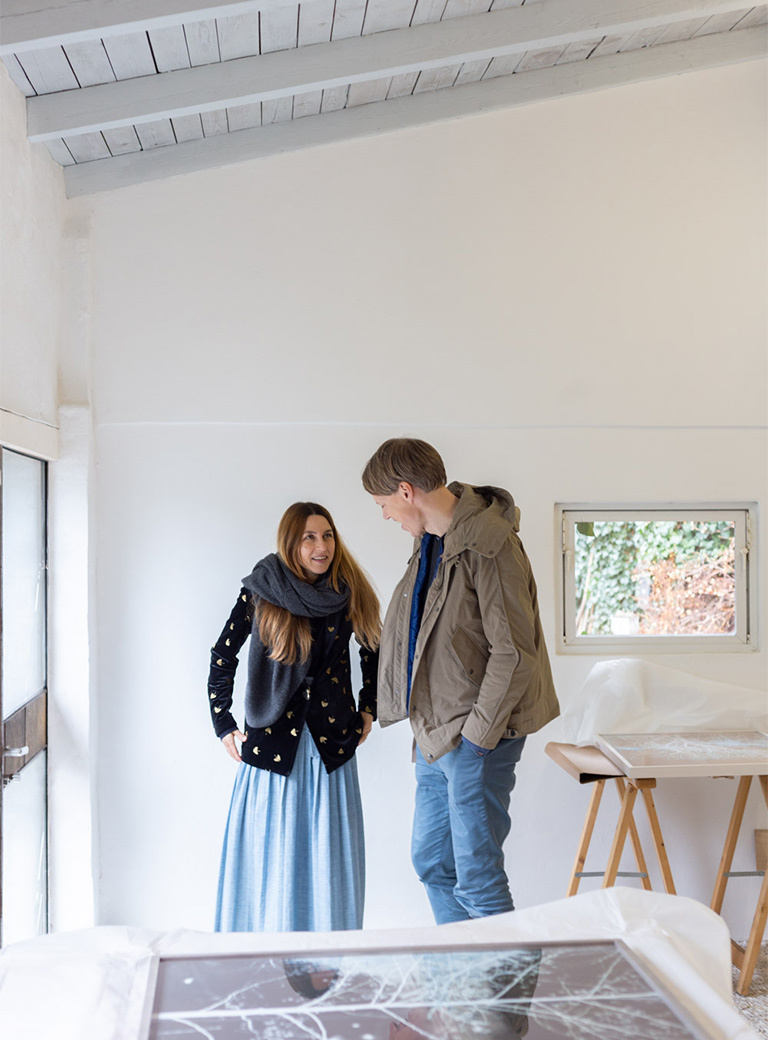
You speak as WE, develop ideas together, exchange ideas. How is your cooperation really? You, Julia, are clearly more than "just" the wife, you are Fiete’s "manager" and also a part of the artistic process. How would you describe your cooperation?
JS: No, I'm not really Fiete’s manager, that wouldn't really describe it. It's very complex. I support Fiete in the progress of his artistic development, in the development of his ideas and his work, and I also become a part of it. We work together at eye level. But it's deliberately not Julia Stolte on the work, but Fiete Stolte, we never wanted to change anything about that. The works have a lot to do with him as a person. Meanwhile I am also developing my own ideas for Fiete. He also develops ideas and we introduce them to each other. It's thinking into his work. Meanwhile I am able to think ideas in such a way that it seems to him as if they were his own. There's a congruence in thinking, we've been working together for five years. Nevertheless, we are very critical of what the other is suggesting, and we are clearly moving out of the relationship comfort zone. But that is a good review of the idea. That doesn't always make things easy and holds a lot of potential for conflict. If one then agrees, it is all the more beautiful. Agreement is reached through dialog with one another.
FS: An anecdote concerning that: When I introduced Julia to the idea of Roots, she immediately said: "Great, do that, that's good." At first, I was almost offended because I thought she didn't feel like discussing it with me and wanted to fob me off or had something else on her mind. But she simply thought it was good. That was rather unusual for us, but beautiful.
What are your next projects?
FS: We have an exhibition in the Weserburg, curated by Janneke de Vries. This will be a large exhibition, which will be fed by many collections and archives, and we are very much looking forward to it. The list of exhibiting artists reads very well and interesting. Then there's the aforementioned exhibition in Potsdam this summer with the two Roots, where several art collectors have joined forces under the name Art'Us Collectors' Collective to make their works available to curators and museums. It will certainly be very exciting.
JS: In the summer we plan to realize a number of new works, then we can work well outside. Many things also happen spontaneously.
One last question: Your studio is located in a large park, at a cemetery, and looks almost like an island in the middle of Berlin. What role does your studio play for you and your work?
JS: I like to use the term "Twilight Zone" to describe the place. We are in the middle of the city and are yet somehow outsourced, somehow in-between. There's a prison nearby, an airport, we're close to the lake, surrounded by trees, there used to be a cemetery right here, everything is in the middle of nature. You can stare at the sky or at the lake. Many works are created in exactly this way – sometimes through reflections of the sky in a teacup or in the eyes. We are not free of art openings, we both studied at the art academy. But I must always be able to free myself from all this information and find my own way. And here the place functions like a filter and brings one back to a certain originality of observation.
FS: One recognizes where the works were created. They carry this place within them. They also carry the idea of simultaneity within them.
